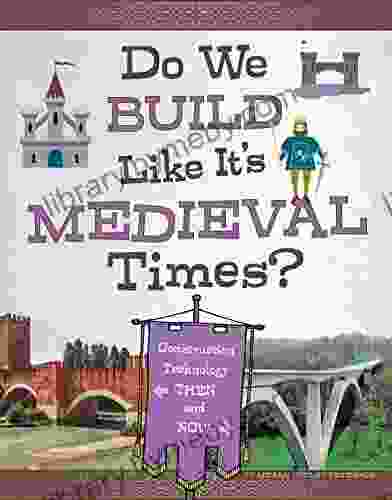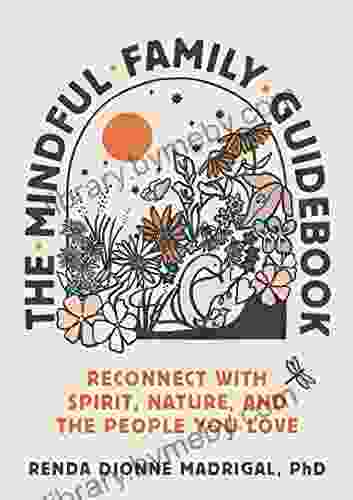Do We Build Like It Medieval Times? Unveiling the Architectural Legacy of a Bygone Era

4.8 out of 5
| Language | : | English |
| File size | : | 21190 KB |
| Print length | : | 48 pages |
| Screen Reader | : | Supported |
The enigmatic allure of medieval times has captivated imaginations for centuries. From its intricate castles to towering cathedrals, the architectural legacy of this period remains a testament to human ingenuity and artistic expression. In an era of modern construction and technological advancements, it begs the question: do we still build like it medieval times? This article delves into the captivating history, innovative techniques, and enduring impact of medieval architecture, exploring its parallels and differences with modern construction practices.
The Architectural Tapestry of Medieval Times
The medieval period, spanning from the 5th to the 15th century, witnessed an explosion of architectural activity across Europe and beyond. As societies flourished and economies grew, so too did the demand for monumental structures that reflected power, wealth, and religious devotion. Medieval architecture showcased a remarkable fusion of styles, encompassing Romanesque, Gothic, and Byzantine influences. Each style brought forth its own unique characteristics, shaping the architectural landscape of the era.
Romanesque architecture, prevalent in the early medieval period, was characterized by its massive stone walls, rounded arches, and small windows. The thick walls provided structural stability and defense, while the small windows limited heat loss and created a somber interior ambiance. Notable examples include the Durham Cathedral in England and the Pisa Cathedral in Italy.
The Gothic era, from the 12th to the 15th century, ushered in a transformative shift in architectural design. Pointed arches, ribbed vaults, and flying buttresses became defining features, allowing for taller and more spacious structures. The Chartres Cathedral in France and the Westminster Abbey in London stand as magnificent testaments to the ingenuity of Gothic architects.
Byzantine architecture, prevalent in the Eastern Roman Empire, blended elements from both the Roman and Greek traditions. Its distinctive features included domes, mosaics, and elaborate ornamentation. The Hagia Sophia in Istanbul, Turkey, remains an architectural marvel, showcasing the grandeur and opulence of the Byzantine style.
Modern Construction: A Convergence of Techniques
The rise of modern construction in the 19th and 20th centuries brought forth new materials, technologies, and design principles. Reinforced concrete, steel beams, and glass facades became the cornerstones of modern architecture, enabling the construction of skyscrapers and other awe-inspiring structures. While these innovations marked a departure from traditional medieval construction methods, they also drew inspiration from the past.
Architects such as Frank Lloyd Wright and Antoni Gaudí found inspiration in medieval cathedrals, incorporating elements like pointed arches and stained glass windows into their designs. The Sagrada Familia in Barcelona, Gaudí's unfinished masterpiece, is a testament to this architectural dialogue between the medieval and the modern.
The Enduring Legacy of Medieval Architecture
Despite the technological advancements of modern construction, the architectural legacy of medieval times continues to shape our built environment in profound ways. The principles of structural stability, space utilization, and aesthetic appeal established during the medieval period remain fundamental considerations in architectural design today.
Gothic cathedrals, with their soaring vaults and intricate stained glass windows, continue to inspire awe and wonder in observers. Their ribbed vaults provide structural support while allowing for vast interior spaces, a concept that has influenced the design of modern sports stadiums and concert halls. The use of buttresses to distribute weight has also found its way into modern engineering applications.
Medieval castles, with their thick walls and strategic defenses, have informed the design of modern fortifications and security structures. The concept of a moat, once used to protect castles from attackers, has been adapted for use in modern military bases and government buildings.
Building Like Medieval Times: A Modern Perspective
While we may not build exactly like medieval times, the architectural legacy of that era continues to inform and inspire modern construction practices. From structural principles to aesthetic considerations, medieval architecture provides valuable lessons for contemporary architects and engineers.
The focus on craftsmanship, sustainability, and the integration of art into architecture is a reminder of the importance of blending beauty with functionality. The use of natural materials and environmentally friendly techniques, such as geothermal heating and rainwater harvesting, is a growing trend in modern architecture, echoing the medieval emphasis on harmony with nature.
The question of whether we build like medieval times is not simply a matter of replicating ancient techniques. Rather, it is about understanding and appreciating the architectural legacy of that era and incorporating its enduring principles into modern construction. By drawing inspiration from the ingenuity and artistry of medieval builders, we can create structures that are not only functional but also beautiful and timeless.
The architectural legacy of medieval times remains a testament to the human capacity for innovation and the pursuit of grandeur. As we continue to build in the 21st century and beyond, the lessons learned from medieval architecture will undoubtedly continue to guide and inspire the design of our built environment.
4.8 out of 5
| Language | : | English |
| File size | : | 21190 KB |
| Print length | : | 48 pages |
| Screen Reader | : | Supported |
Do you want to contribute by writing guest posts on this blog?
Please contact us and send us a resume of previous articles that you have written.
 Book
Book Novel
Novel Page
Page Chapter
Chapter Text
Text Story
Story Genre
Genre Reader
Reader Library
Library Paperback
Paperback E-book
E-book Magazine
Magazine Newspaper
Newspaper Paragraph
Paragraph Sentence
Sentence Bookmark
Bookmark Shelf
Shelf Glossary
Glossary Bibliography
Bibliography Foreword
Foreword Preface
Preface Synopsis
Synopsis Annotation
Annotation Footnote
Footnote Manuscript
Manuscript Scroll
Scroll Codex
Codex Tome
Tome Bestseller
Bestseller Classics
Classics Library card
Library card Narrative
Narrative Biography
Biography Autobiography
Autobiography Memoir
Memoir Reference
Reference Encyclopedia
Encyclopedia Marie Tillman
Marie Tillman Zain Deane
Zain Deane Mark Stevens
Mark Stevens Linda Robinson
Linda Robinson Rosie Clarke
Rosie Clarke Rick Goldschmidt
Rick Goldschmidt Paula Davis
Paula Davis Lexi Sundell
Lexi Sundell Rupnarayan Bose
Rupnarayan Bose Sandra Dallas
Sandra Dallas Pierre Dardot
Pierre Dardot Shaquille O Neal
Shaquille O Neal Zeneba Bowers
Zeneba Bowers Rick Ackerly
Rick Ackerly Lawrence Dawson
Lawrence Dawson R H Charles
R H Charles Veera Hiranandani
Veera Hiranandani Susan Rice
Susan Rice Vijay Kumar
Vijay Kumar Phil Bourque
Phil Bourque
Light bulbAdvertise smarter! Our strategic ad space ensures maximum exposure. Reserve your spot today!

 Lawrence BellUnveil the Enchanting Flora of the Carolinas: Dive into "Seacoast Plants of...
Lawrence BellUnveil the Enchanting Flora of the Carolinas: Dive into "Seacoast Plants of...
 John Dos PassosMy Life, My Food, My Kurdistan: A Memoir of Resilience and Culinary Tradition
John Dos PassosMy Life, My Food, My Kurdistan: A Memoir of Resilience and Culinary Tradition
 Charlie ScottUnveiling the Rich Tapestry of Latin American Literature: Literary Memoirs...
Charlie ScottUnveiling the Rich Tapestry of Latin American Literature: Literary Memoirs...
 Felix CarterUnleash the Magic of Paper: A Journey into Entertaining and Amusing Models,...
Felix CarterUnleash the Magic of Paper: A Journey into Entertaining and Amusing Models,... Eugene PowellFollow ·10.8k
Eugene PowellFollow ·10.8k Marc FosterFollow ·15.9k
Marc FosterFollow ·15.9k Rod WardFollow ·4k
Rod WardFollow ·4k Colby CoxFollow ·7.1k
Colby CoxFollow ·7.1k Jamison CoxFollow ·16.8k
Jamison CoxFollow ·16.8k Oliver FosterFollow ·19.1k
Oliver FosterFollow ·19.1k Theodore MitchellFollow ·3.4k
Theodore MitchellFollow ·3.4k Foster HayesFollow ·10.2k
Foster HayesFollow ·10.2k

 Clay Powell
Clay PowellDiscover the Enigmatic Beauty and Profound Meaning in...
An Exploration of Emptiness, Fulfillment,...

 Brenton Cox
Brenton CoxThe Life and Times of the Woman Who Changed Abortion: The...
Norma McCorvey, the woman known...

 Darius Cox
Darius CoxBest 60 Short Hairstyles For Women With Thick Hair: A...
Embracing the beauty of...

 John Parker
John ParkerThe Healthy Pregnancy Book: Your Essential Guide to a...
Pregnancy is a...
4.8 out of 5
| Language | : | English |
| File size | : | 21190 KB |
| Print length | : | 48 pages |
| Screen Reader | : | Supported |








